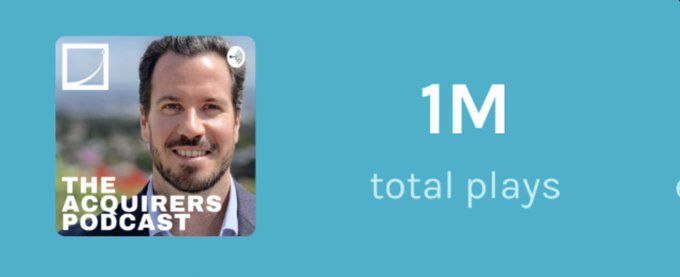During his recent interview with Tobias, Francisco Olivera, President of Arevilo Capital Management discussed how Capital Structure Tells You A Lot About Good Management. Here’s an excerpt from the interview:
Tobias: Let’s talk a little bit about the capital structure. That’s the third thing you– What are you looking for in terms of the capital structure?
Francisco: Well, I think what I look for is that it’s optimized for good shareholder returns, but at the same time, it’s not a big risk. Any business with too much leverage or fancy financing could get into trouble easily. So, if you’re a business that is a consistent monthly revenue stream and you’re a subscription type of business, like at Charter, and you’re taking market share and you can potentially increase pricing, it’s a good business that could handle a higher leverage and maybe a business that is just dependent on advertisements and it’s not like a contracts type, subscriber type of revenue. I wanted to make sure that they’re optimized for that.
Sometimes, when managements know their business as well, they know how to put a good cap structure. And usually just having way too much cash that’s just lying around and growing, and no good use of it, and you’re not using it, probably not a good idea.
Take Apple after Tim Cook saw the light on capital allocation pre that and post that. Basically, it was extremely hard to put to work in the business, hundreds of billions of dollars. So, I see as a way of capital structure because if you’re using a little bit more– getting net debt neutral, which is what they want to do putting some debt, returning capital, because they know they print so much money. I think that’s a positive thing.
Charter, they can maintain leverage at four to four and a half times EBITDA and probably a lot higher, but that’s where you get into more– it’s a little bit of playing with fire in a sense. It’s funny, it’s a great business, great industry, but it’s a company that went bankrupt during the financial crisis, with a different management team, much more aggressive strategy. So, even a strong business like Charter, you can overdo it on the cap structure.
But a cap structure tells you a lot how they think about the business. Why are they issuing debt? What are they doing with the capital? Why do they want to maintain a target leverage? And then, you can go peel behind that and look under the hood and say, “Okay, well, actually they want to maintain leverage at this target because this is what they’re going to actually do with the cash.” And usually weaker businesses, you’re adding leverage over time because you basically need the cash and you’re burning it in the business and kind of a vicious cycle and path towards zero. So, it informs you of how management thinks about the business, I think, by how they structure the capital structure. So, it’s something I try to think about. It comes more for my investment banking days because it was such a focus, but you can learn a lot about management teams and businesses by how they look and structure their capital structure.
Tobias: So, you’re looking– for something like Charter, it’s got subscription revenues on one side, so four to five times EBITDA debt is reasonably conservative for a business like that. Is that how you’re thinking through something like that?
Francisco: Yeah. And maintaining a leverage like that, because they’re growing EBITDA pretty well and cash flow is growing pretty well means the cash is coming in, and then you’re actually increasing the dollar amount of total debt that you have. And you’re taking all that, returning to shareholders. As long as the business is really good, and you maintain that, it can be a lot of money that comes back to shareholders. So, it’s an interesting way of thinking about it.
For Charter, for example, you have four, four and a half times EBITDA, they’re at the 4.3-ish range. And last quarter, they had $2 billion in cash. So, good cash flow. Essentially, there’s a lot of capital that they can return to the business and they invest a lot in the business. CapEx as a percentage of revenues is in the teens. Potentially can go low over a time, but it’s a business– it’s high capital intensity, but even with that, they still generate a lot of cash flow and with a target leverage range, they can return a lot of cash flow to shareholders.
You can find out more about the Acquirers Podcast here – Acquirers Podcast. You can also listen to the podcast on your favorite podcast platforms here:
For all the latest news and podcasts, join our free newsletter here.
Don’t forget to check out our FREE Large Cap 1000 – Stock Screener, here at The Acquirer’s Multiple:




